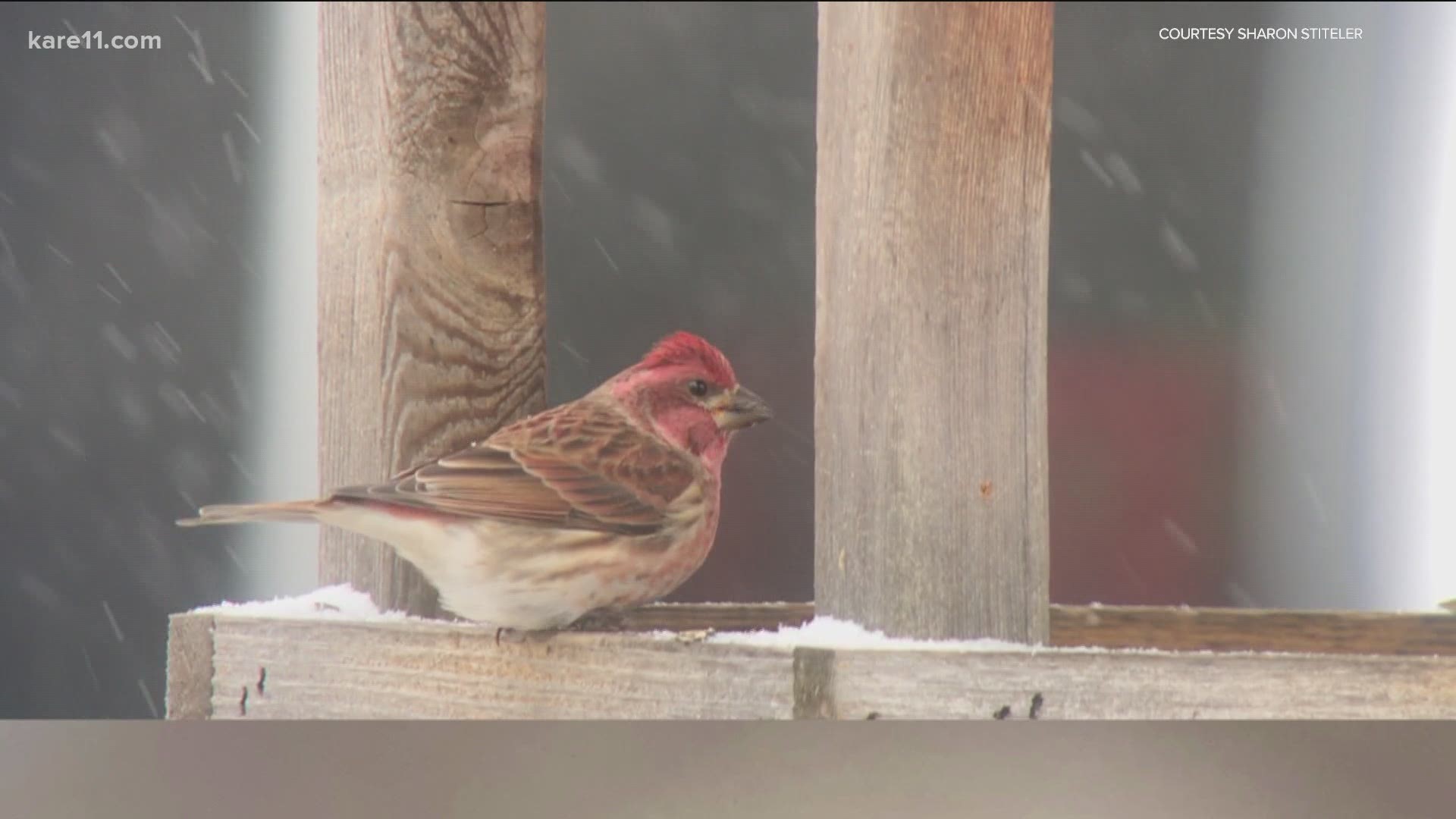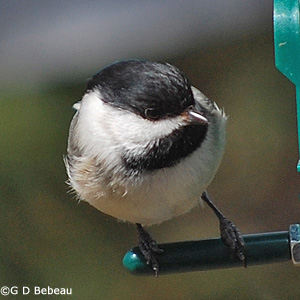In the article “Feeding Winter Birds in Minnesota,” readers will find valuable information on attracting and identifying common backyard birds in the United States, with a specific focus on the harsh winters of Minnesota. With an emphasis on the importance of providing food for birds during these challenging seasons, the article suggests various types of bird feeders and foods that attract specific bird species. It highlights the benefits of bird feeding, such as bringing nature into your backyard and involving children in outdoor activities. Additionally, readers can find a comprehensive list of common winter birds in Minnesota, including the Black-capped Chickadee, Downy Woodpecker, and Northern Cardinal, among others. The article also provides recommendations for setting up a winter bird feeding station, featuring tube feeders, platform feeders, suet cages, and heated bird baths.

Benefits of Feeding Winter Birds
Feeding winter birds not only brings beauty and joy to your backyard, but it also offers many benefits to both the birds and yourself. By providing food for birds during the harsh Minnesota winters, you are helping them survive and thrive in a challenging environment. Additionally, bird feeding allows you to bring nature right into your own backyard, creating a peaceful and serene atmosphere. It also provides a wonderful opportunity to involve children in outdoor activities and teach them about the importance of conservation and wildlife.
Attracting Birds to Feeders
Attracting birds to your feeders requires careful consideration of the location, the types of food offered, and the type of feeders used.
Choosing the Right Location
When selecting a location for your bird feeders, it is important to choose a spot that is easily visible from both indoors and outdoors. Placing the feeders near trees or shrubs can provide shelter and perching spots for the birds. It is also beneficial to position the feeders in an area that is protected from strong winds and predators, such as cats.
Providing a Variety of Foods
Offering a variety of foods is essential to attract a diverse range of bird species. Different birds have different feeding preferences, so providing a mix of seeds, suet, and nuts will attract a wider variety of birds to your feeders. Be sure to also consider the specific dietary needs of certain bird species when choosing the foods to offer.
Using the Right Feeders
Using a variety of feeders can cater to different bird species and their feeding habits. Tube feeders are great for attracting small birds such as finches and chickadees, while platform feeders are ideal for larger birds like cardinals and jays. Suet feeders, on the other hand, are perfect for woodpeckers and nuthatches who enjoy feasting on suet cakes.

Identifying Common Backyard Birds
Knowing the common backyard birds in the United States and specifically in Minnesota can help you better appreciate the feathered visitors to your feeders.
Overview of Common Backyard Birds in the United States
Some common backyard birds in the United States include the Black-capped Chickadee, Downy Woodpecker, White-breasted Nuthatch, Blue Jay, Hairy Woodpecker, Dark-eyed Junco, Northern Cardinal, Red-bellied Woodpecker, House Sparrow, American Goldfinch, Red-breasted Nuthatch, and House Finch. Each of these birds has distinct markings and behaviors that make them easily recognizable.
Common Winter Birds in Minnesota
In Minnesota, you can expect to see a variety of winter birds at your feeders. The Black-capped Chickadee is a frequent visitor known for its distinct black cap and cheerful song. The Downy Woodpecker, with its black and white plumage, is another common winter bird in Minnesota. The White-breasted Nuthatch, recognized by its upside-down feeding pose and soft trilling call, is also a regular visitor. Other winter birds in Minnesota include the Blue Jay, Hairy Woodpecker, Dark-eyed Junco, Northern Cardinal, Red-bellied Woodpecker, House Sparrow, American Goldfinch, Red-breasted Nuthatch, and House Finch.

Recommended Bird Feeders
To attract a variety of bird species, it is recommended to have a selection of different feeders in your backyard.
Tube Feeders
Tube feeders with small perches and multiple feeding ports are ideal for attracting small songbirds like finches and chickadees. These feeders typically have small openings that prevent larger birds from accessing the seeds.
Platform Feeders
Platform feeders, also known as tray feeders, are flat surfaces that allow larger birds like cardinals and jays to comfortably feed. They are also suitable for ground-feeding birds like doves and sparrows.
Suet Cages
Suet cages are designed to hold suet cakes, which are high-energy treats made from rendered fat and mixed with seeds, nuts, and fruits. These feeders attract woodpeckers, nuthatches, and other suet-loving birds.

Recommended Bird Foods
Choosing the right bird foods is crucial for attracting specific bird species and providing them with the necessary nutrients.
Seeds
A variety of seeds can be offered to attract different bird species. Black-oil sunflower seeds are a favorite among many backyard birds, including finches, nuthatches, and chickadees. Other popular seed options include nyjer seeds for finches and safflower seeds for cardinals.
Suet
Suet is a high-calorie food that is especially beneficial during the winter months when birds need extra energy. It is particularly attractive to woodpeckers, nuthatches, and other insect-eating birds. Suet cakes can be easily inserted into suet cages for convenient feeding.
Nuts
Nuts can be offered to attract birds such as jays and woodpeckers, which have strong beaks capable of cracking open the shells. Peanuts and almonds are popular choices, but be sure to avoid salted or seasoned nuts, as they can be harmful to birds.

Setting Up a Winter Bird Feeding Station
Creating a winter bird feeding station involves careful planning and consideration of the birds’ needs.
Choosing the Right Feeders and Foods
Set up a combination of tube feeders, platform feeders, and suet cages to cater to a variety of bird species. Offer a mix of seeds, suet, and nuts to provide a balanced diet for the birds and attract a wider range of species. Be sure to regularly clean the feeders and refill them as needed.
Placing the Feeders in the Right Spot
Position the feeders in a location that is easily visible from your windows so you can enjoy watching the birds even from indoors. Choose a spot that is protected from strong winds and predators, and close to trees or shrubs for birds to seek shelter. It is also helpful to place feeders near a water source, such as a heated bird bath, to provide birds with a drinking and bathing spot.
Providing a Water Source
In winter, finding open water can be challenging for birds. Providing a heated bird bath or a shallow dish of water can help keep birds hydrated and clean. Ensure the water source is not frozen, and consider using heaters or heated birdbaths to prevent freezing.
By following these recommendations, you can create a welcoming winter bird feeding station that attracts a diverse range of bird species to your backyard. Not only will you be providing vital assistance to birds during the harsh Minnesota winters, but you will also enjoy the beauty and wonder of nature right outside your door. So grab your binoculars, hang up your feeders, and prepare to be amazed by the incredible array of feathered visitors that will come to your backyard.
Leave a Reply